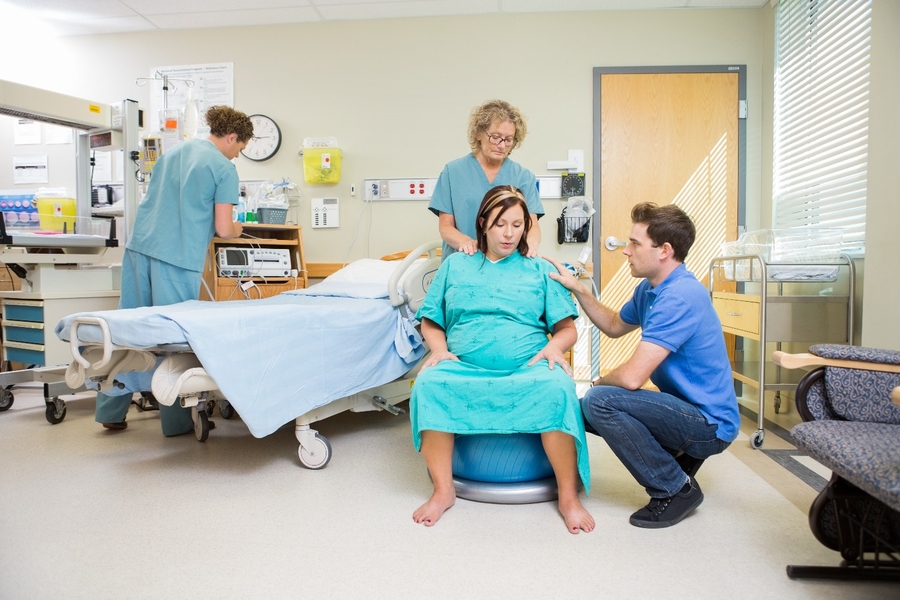
When Is An Episiotomy Required?
19 Feb 2018 | 4 min Read
Babychakra
Author | 1369 Articles
An episiotomy is one of the minor surgeries that your obstetrician might have to do while delivering your baby via natural birth. The area between vagina and anus is cut, to expand the opening of the vagina and allow easy passage of the baby. It is performed only during a vaginal delivery.
Earlier, episiotomy was a routine procedure, but now trends have changed. If you are looking forward to have a normal delivery or vaginal delivery, these are the things you should know about episiotomy.
When is an episiotomy performed?
An decision of performing an episiotomy is taken during the delivery of the baby and is not a planned procedure, like a C-section. The decision is taken spontaneously by the obstetrician for the following conditions, if your obstetrician feels that-
- You might bleed profusely during the procedure
- You might get extensive vaginal tearing
- Your baby is large in size
- Position of your baby is abnormal
- Delivery of your baby needs to be quicker for reducing injury to you or the baby
- Your baby has a large head
How is an episiotomy performed?
An episiotomy cut is performed on perineum i.e. the small patch of tissue between vagina and anus.

The Episiotomy procedure is performed under local anesthesia that helps in numbing the local tissues, so you don’t feel the pain either during a cut or during its repair. Following injection of anesthesia, there is a small incision or cut performed on the perineum. This cut can be of two types, depending upon the conditions judged by your obstetrician. It can be either a vertical cut (Median incision or Midline episiotomy) or a lateral cut (Mediolateral incision). Midline episiotomy is relatively simpler, less painful, but it is likely to cause injury to anus. In contrast, a mediolateral episiotomy cut is a little difficult to repair, and is more painful but has lesser chances of injury to anus and heals more easily.

How can episiotomy help me and what are its advantages?
Episiotomy is typically recommended for reducing the injury to the mother and the baby during delivery, as it widens the vaginal opening and allows easy passage of the baby. It also reduces post-delivery pain, cuts or perineal tears (that might have happened due to a normal delivery).
Advantages of episiotomy for mothers are as follows:
- Reduces perineal stretch and perineal injury (tear)
- Reduces chances of prolapse of pelvic organs
- Reduces bowel incontinence (due to perineal tear injuring anus)
- Reduces urinary incontinence i.e. dribbling or leakage
- Reduces sexual dysfunction
Advantages of episiotomy for neonates are as follows:
- Prevents asphyxia i.e. shortness of breath
- Injury to brain
- Brain hemorrhage
- Injury to shoulder
What are the contraindications of an episiotomy?
Though episiotomy is a simple procedure with very few complications, yet it is performed only after taking your consent.
Here is a list of conditions, if you have any of them, you must inform your obstetrician, so that he avoids episiotomy
- Inflammatory bowel disease (Crohn’s disease or ulcerative colitis)
- Perineal malformations
- Urinary incontinence
What are the complications or side effects of episiotomy?
If you have undergone an episiotomy, perineal tear or episiotomy wound might pain or hurt for a few weeks, especially while walking or sitting or squatting. If the tear is longer, it may take longer to heal and might hurt longer too. Episiotomy stitches help in recovery and get absorbed on their own into the skin.
Episiotomy complications include the following:
- Severe perineal injury or tear
- Sexual dysfunction or dyspareunia
- Prolapse of pelvic floor organs
- Increased risk of urine infection
How should I take care of my episiotomy wound?
If you have undergone episiotomy, you must take adequate care about the wound.
Episiotomy wound care includes the following:
- Use of ice packs or cold applications which soothes the episiotomy pain
- Using warm water during urination to reduce dysuria
- Cover your wound well while passing stools to avoid infection
- Use pain relieving cream given by your obstetrician to reduce episiotomy pain
- Sometimes the procedure can leave behind an episiotomy scar, so you might need to use creams that can reduce scarring or help absorbing the fibrous scar.
Disclaimer: The information in the article is not intended or implied to be a substitute for professional medical advice, diagnosis or treatment. Always seek the advice of your doctor.
Also read: What must you know about Breastfeeding after C-Section or after Episiotomy?
Explore the entire collection of articles: Pregnancy must know
A


Related Topics for you
Suggestions offered by doctors on BabyChakra are of advisory nature i.e., for educational and informational purposes only. Content posted on, created for, or compiled by BabyChakra is not intended or designed to replace your doctor's independent judgment about any symptom, condition, or the appropriateness or risks of a procedure or treatment for a given person.
